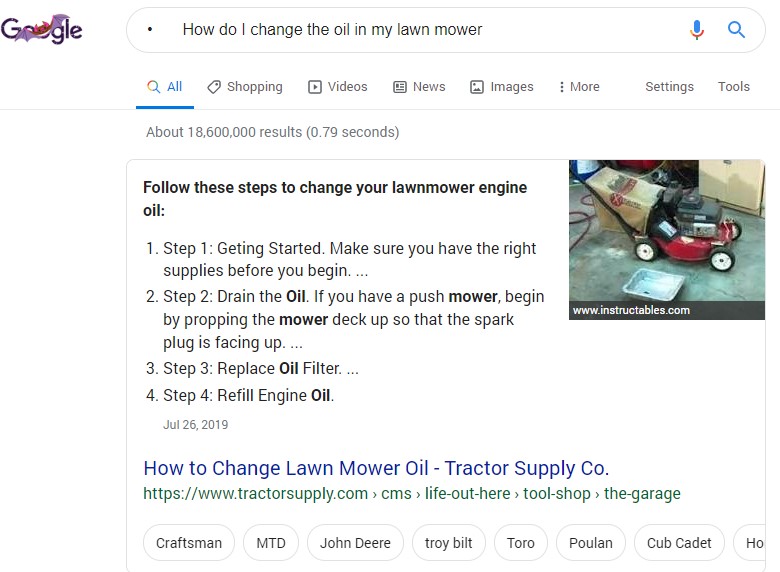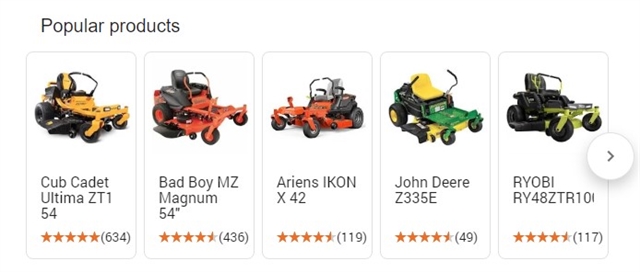Everyone talks about voice search these days, but some marketers in manufacturing wonder whether voice search even applies in their business sector.
Yes. It does.
Let’s take a look at why voice search matters in manufacturing and what you can do to optimize your content for voice search.
What is voice search?
Voice search allows users to speak into a device instead of typing keywords to generate results. It’s been around for a while, but voice search has exploded in recent years, with the advent of smart speakers. Google’s voice recognition technology is now 95 percent accurate and the number of devices in circulation that can process voice searches continues to rise.
Voice search could well pass the tipping point in 2020. Gartner data indicates that 30 percent of all searches in the coming year will be via voice. ComScore predicts 50 percent.
How does Voice Search Apply to Manufacturers?
You might think that voice searches mostly aim at quick questions – What’s the safe internal temperature for pork roast? How many feet are in a yard? Who’s buried in Grant’s Tomb?
In fact, voice search has extended to all verticals. Consider these real keywords that illustrate how users apply voice search in the manufacturing world:
- Conveyor belt cleaner system
- Who makes environmentally friendly straws?
- How do I change the oil in my lawn mower?
- Where can I find a billboard sign maker?
Some keywords don’t change from keyboards to vocal cords. But keep in mind that voice searches can be less formal and more colloquial that typed searches. To succeed at voice search, start with the basics of Search Engine Optimization, but account for the informality of common speech.
How Do I optimize my Manufacturing website for voice search?
Step 1: Conduct an SEO Audit of your Website
Begin optimizing for voice search by making sure your website is set up for success on all search engines. This includes checking such items as:
- Page speed
- Mobile usability
- Proper use of such technical SEO elements as XML sitemaps and robots.txt files
- Clean navigation and site hierarchy
- Images with alt text
- Rich product or services pages, with reviews
- Blog or resource content and use of natural language
Once you have evaluated your SEO status, look closely at your content. What content lends itself to voice search? What conversational keywords should you target with that content?
Let’s say you manufacture plumbing couplings, including a high-pressure line. Think about keywords your target customer might say out loud: What couplings won’t break at high psi? Do plastic or metal fittings last longer under high pressure? If you already have content that answers these questions, look to optimize that content for voice search.
Step 2: Optimizing Content for Featured Snippets
The featured snippet is the first item on the search engine results page. It occupies the “zero position,” which ranks higher than #1 on Google. The featured snippet answers the question the user posed in the Google search. Furthermore, Google reads these snippets out loud to users who conduct voice searches.

Featured Snippets come in various types, including:
- Instant answers
- Paragraphs
- Lists & steps
- Tables
- Images and videos
Getting your content into the featured snippet will set you up to appear in relevant voice search results.
How do you get into the featured snippets?
First, identify the relevant search questions your content is well-suited to answer.
If you manufacture automotive brake parts, a likely user question might be: “How do I know when to replace disc brake pads?” Or “How do I replace disc brake pads myself?”
Where do you currently show up in Google search results for such questions? Who is in the featured snippet today? Once you know the competition, you can evaluate their content to determine why they won the zero position. Adjust your content to compete for that spot.
Conduct voice searches to see if the answer for your query are the same as those you get from typed queries. We often speak differently than we type. Experimenting with your own voice searches will help you to understand new questions and queries that work for given topics.
Step 3: Adding Schema.org Markup to your Content
Schema.org markup is microdata that you can add to your website to describe the content. Schema.org markup generates rich snippets on the search engine results pages. It yields information like that contained in a featured snippet. This information is a key element to success with voice search results.
The product schema, of the many different types of schema.org markups, provides the most impact for manufacturers. Product schema provides Google with coded data about your products, including the name, description, images, prices, brands and reviews. Google uses this data to display rich snippets (such as popular or related products) on the results page.

If your customers use voice search to find your products, these rich snippets will help them get the information they need. For example, a user might search “What is the horsepower for the Ariens IKON X42?” If you include schema.org markup in your product details, the user’s device will recite this info.
FAQs are perfect for voice search. Questions and answers have always been an important marketing tactic for manufacturing websites, so the FAQ schema can benefit manufacturers. With schema.org markup, you can make sure that Google and voice search engines understand the structure of your FAQs and place your content high in voice search results.
Conclusion
Voice search is not going away. More and more, we verbally ask our devices for answers and to help us find products and services. We might not immediately buy through a voice search, but the immediate feedback will influence the buying process. Manufacturers should invest more in voice search tactics, because this investment will certainly improve your comprehensive SEO.






